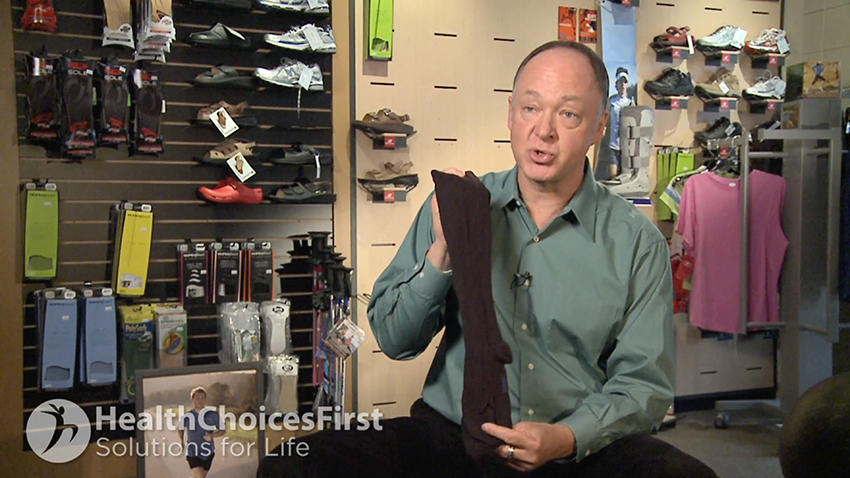Chronic Disease Education
Acute Condition Education
Working with your Family Physician
Working with Allied Care Providers
Compression Socks

Knowledge is Power.
True/False - Quiz: Do You Understand Compression Socks?
Information - Compression Socks
 Compression socks squeeze the legs slightly more than regular socks to promote improved blood flow in your legs. This increases the pressure in the tissues beneath the skin, reducing the excess leakage of fluid from the capillaries.
Compression socks squeeze the legs slightly more than regular socks to promote improved blood flow in your legs. This increases the pressure in the tissues beneath the skin, reducing the excess leakage of fluid from the capillaries.
The Benefits of Wearing Compression Socks
Compression stockings prevent blood from pooling in the legs, which can cause problems including:
- Varicose veins
- Blood clots
- Inflammation of the vein (also called phlebitis thrombophlebitis)
- Damage to vein walls and valves
 Many patients benefit from wearing compression socks, including those with diabetes, varicose veins and lymphoedema (tissue swelling). Some people wear compression stockings when sitting for long periods of time, like on a flight or road trip; they're also commonly worn by athletes.
Many patients benefit from wearing compression socks, including those with diabetes, varicose veins and lymphoedema (tissue swelling). Some people wear compression stockings when sitting for long periods of time, like on a flight or road trip; they're also commonly worn by athletes.
How to Wear Compression Socks
There are various sizes and pressures of compression stockings to choose from, so ask your physician what’s best for you before you buy.
There are two primary types of compression stockings: graduated compression socks and anti-embolism stockings. In graduated compression socks, the level of compression is strongest at the ankle and gradually decreases towards the top of the stocking.
Anti-embolism stockings reduce your risk of deep vein thrombosis. Designed for people who are less mobile, the level of compression differs.
Depending on your reason for wearing compression socks, you may wear them on both legs or just on one. You should have at least two stockings, or two pairs if you're wearing them on both legs. You should put your compression stockings on during the day and take them off before going to bed.
Talk to your doctor or pharmacist if you'd like more information on compression socks.
Visit HealthChoicesFirst.com for more health and wellness videos and resources.
Print this Action Plan and check off items that you want to discuss with your healthcare provider
-
There are various sizes and pressures of compression stockings to choose from, so ask your physician what’s best for you before you buy.
-
You should put your compression stockings on during the day and take them off before going to bed.
-
Depending on your reason for wearing compression socks, you may wear them on both legs or just on one.
-
Anti-embolism stockings reduce your risk of deep vein thrombosis. Designed for people who are less mobile, the level of compression differs.
-
You should have at least two stockings, or two pairs if you're wearing them on both legs.
